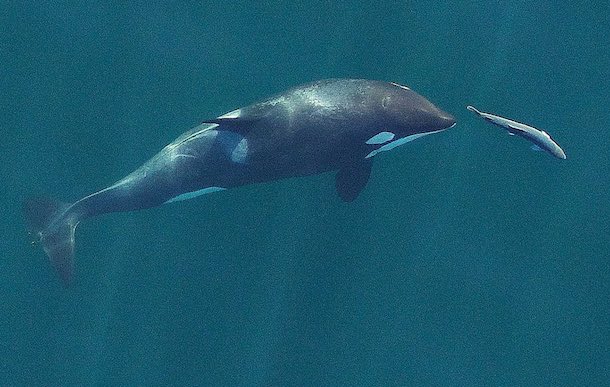forum
library
tutorial
contact

Killer Whales Far More Complex
Than Many Think
by Editorial BoardCapital Press, January 9, 2020
|
the film forum library tutorial contact |

|
Killer Whales Far More Complex
by Editorial Board |
 A recent University of Washington study about killer whales could offer another clue to the well-being of the southern resident killer whales that live in Puget Sound and the Salish Sea off the coast of Washington state.
A recent University of Washington study about killer whales could offer another clue to the well-being of the southern resident killer whales that live in Puget Sound and the Salish Sea off the coast of Washington state.
According to the study, killer whales along the coast of southern and southeast Alaska, British Columbia and Washington eat more than 2.5 million adult chinook salmon each year.
With the exception of the southern resident population, which is listed as endangered by the federal government, all of the killer whale populations in British Columbia and Alaska are thriving.
According to the study, the reason may be that the other populations of killer whales -- more than 300 off the coast of British Columbia and more than 2,300 off Alaska -- are eating millions of the biggest and most sought-after adult chinook salmon as they migrate southward along the Alaska and Canada coast.
“We have two protected species, resident killer whales and chinook salmon, and we are trying to increase abundances of both -- yet they are interacting as predator and prey,” said Jan Ohlberger, a research scientist in the UW School of Aquatic and Fishery Sciences, in a press release accompanying the study.
The interesting thing about the study is it found killer whales are picky eaters. They like their chinook salmon big -- larger than 25 inches.
“Killer whales don’t show a lot of interest in chinook until they reach a certain size, and then they focus intensely on those individuals,” Ohlberger said.
That means the biggest chinooks are eaten by killer whales in Alaska and British Columbia before they even reach the Salish Sea.
“It’s pretty clear that Alaska killer whales and northern residents get first shot at (the chinook) before they head south through a gauntlet of predators, and that’s when the dregs show up in the Salish Sea,” the study’s co-author, Daniel Schindler, a UW professor of aquatic and fishery sciences, told our colleagues at the Vancouver, B.C., Sun.
Consider a couple of other factors about the southern resident population:
To its credit, the state Legislature last year ordered the state hatcheries to boost production of chinook, but it will take years before they are large enough to become killer whale food.
In light of this study, a fair-minded person may want to reconsider where the real problems lie for the southern population of killer whales. Is it hundreds of miles away at the Snake River dams, or is it the fact that millions of the largest chinook salmon are being eaten by other killer whales before they return to the Puget Sound?
These facts appear to have been left out of the narrative many environmentalists and politicians have been constructing.
Maybe, just maybe, that’s because reality is far more complicated than they think. Or it doesn’t fit their agendas.
An email response to bluefish.org from the Lead Researcher of the Orca Report
Hi Scott,
I appreciate your interest and comments. Regarding hatchery releases of salmon: it is correct that hatchery production of Pacific salmon has remained relatively stable since the 1980s, as shown on your figure, and also that production of hatchery Chinook salmon has declined over that time period, as mentioned in our paper. Chinook salmon hatchery production is only a small fraction of the total salmon release, which is dominated by chum and pinks. Here is a similar plot to yours using North Pacific Anadromous Fish Commission data for Chinook salmon only (see graphic):
Other Pacific salmon may also affect the growth and maturation of Chinook salmon, such that the total number of hatchery salmon in the North Pacific Ocean might be important, as discussed briefly in our paper.
Regarding your comment on CR June Hogs: I totally agree that expanding our data further back in time would be instructive, as would considering the contributions of local extirpations. The disappearance of local populations, especially if more likely for those that reached particularly large sizes, could be a contributing factor that we did not account for in our analysis, primarily due to lack of data. We also acknowledge that there are likely some regional differences in terms of factors that contribute to local trends. I think we have only scratched the surface...
Thanks for sharing your thoughts and happy new year!
Jan
Jan Ohlberger
Research Scientist
School of Aquatic and Fishery Sciences
University of Washington
learn more on topics covered in the film
see the video
read the script
learn the songs
discussion forum
